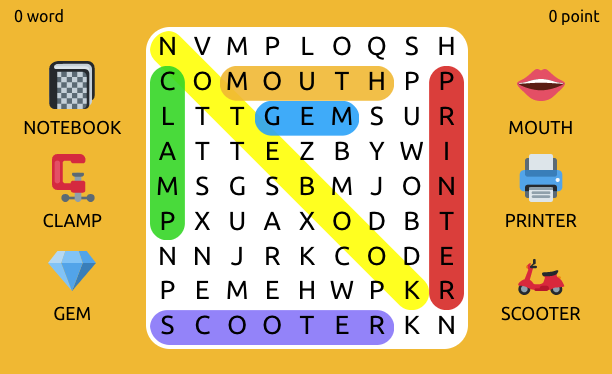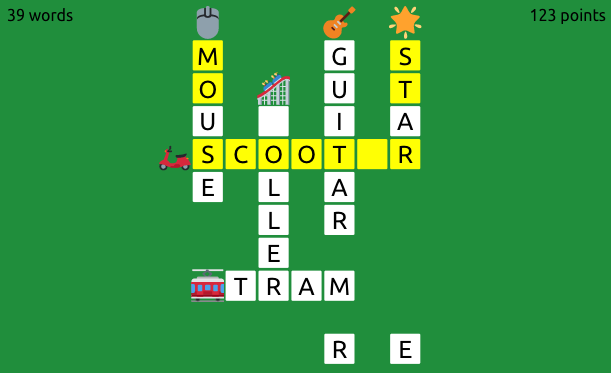A word search game implemented using modern web technologies, especially CSS flex box and SVG.
Try the live demo
Open wordseek.html in your favorite browser (testing on Chrome, Firefox, Safari and iOS)
The first implementation tried using only DIV elements to implement the grid. But making it scale on different devices (e.g. iPhone, laptop, iPad) proved hard: using font-size:1vw for example was a guessing game.
The second implementation used a CANVAS element: scaling it also scaled the characters drawn in the grid. But the font drawn on the CANVAS looked not as sharp as the words nearby. Even after taking into account the device pixel ratio to boost the size of the CANVAS on retina displays.
The current implementation draws the grid using an SVG element. Underneath each text, a small rectangle captures the mouse or touch events. Text elements are removed from the event loop using the CSS rule pointer-events:none. Without the rectangles behind each character, the event would not fire unless the mouse or finger was touching the glyph.
Solutions are added as invisible SVG lines under the text grid (so they appear below the text). When the user has found a word, CSS turns the visibility to 'visible'.
A neat CSS animation shows the number of words found in the current round. Again, the CSS pointer-events:none is used to prevent stealing events destined to the grid element underneath.
The CSS is responsive using media queries to detect device orientation and width.
Similar architecture, but with CSS animations of SVG elements, including removing classnames when the animations end. Also how to rotate and apply CSS animations to SVG elements requires modifying the transform-origin property.
Try the live demo
Open crossword.html in your favorite browser (testing on Chrome, Firefox, Safari and iOS)

